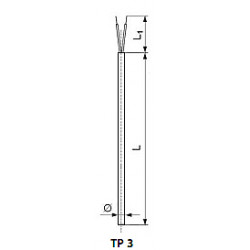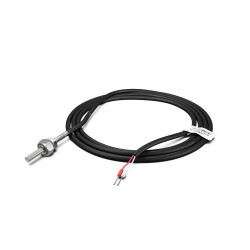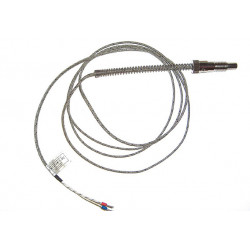Musisz być zalogowany/a
Термопари
Kategorie
- Безконтактные датчики температуры для подвижных объектов - C015
- Термоелектричний датчик температури зі змінною вимірювальною вставкою в металевій оболонці в металевій захисній трубці TD 1
- Термоелектричний датчик температури зі змінною вимірювальною вставкою в металевій оболонці в металевій захисній трубці TP 1
- Термоелектричний датчик температури зі змінною вкладеною в оболонку мірною вставкою в металевій захисній трубці TD 2
- Термоелектричний датчик температури - триточкове вимірювання. тип: tw
- Датчик температури термопари зі вільними кінцями. тип: tp 3
- Датчик температури термопари з втулкою. тип: tp 4
- Датчик температури термопари зі штекером. тип: tp 6
- Термоелектричний датчик температури або опору. тип: kt1
- Термоелектричний датчик температури або опору. тип: kt2
- Termopara prosta (J, K, N) – TC-07
- Термопара з оболонкою (J, K, N) - TC-42
- Термопара з різьбовою клемою (J) - ETB
Ми пропонуємо широкий асортимент термопар для застосувань у промисловості та автоматизації
Вимірювання температури є однією з найважливіших операцій в автоматизації – в промислових умовах найчастіше використовують термопари та резистивні температурні датчики (RTD).
Термопари – застосування
Термопари, також звані термоелектричними датчиками температури, є одним із найпопулярніших рішень для вимірювання температури в промисловості. Основні сфери застосування включають лабораторії, транспорт, вимірювальне та контрольне обладнання, системи збору даних, багатоканальні автоматичні пристрої, сканери, тепловізійні системи та військове обладнання.
Переваги термопар:
- низька ціна;
- проста, міцна та надійна конструкція;
- прогнозовані вихідні напруги;
- можливість використання в хімічно агресивних середовищах;
- широкий діапазон вимірюваних температур від -100°C до понад 2500°C;
- висока точність вимірювання.
Які є типи термопар?
Для виготовлення термопар використовують кілька типів металевих сплавів, кожен з яких призначений для різних застосувань.
Тип E – сплави, придатні для температур від -200°C до 871°C. Використовуються в атмосферах від вакууму до слабоокислювальної та при дуже низьких температурах.
Тип J – сплави, придатні для нижчих температур (0°C до 600°C). Використовуються в хімічній промисловості (виробництво пластмас).
Тип K – промисловий стандарт для температур до 1250°C.
Тип T – сплави, придатні для температур від -200°C до 350°C. Широко застосовуються у харчовій промисловості.
Також перегляньте датчики температури і вологості, які є в нашому широкому асортименті!

























